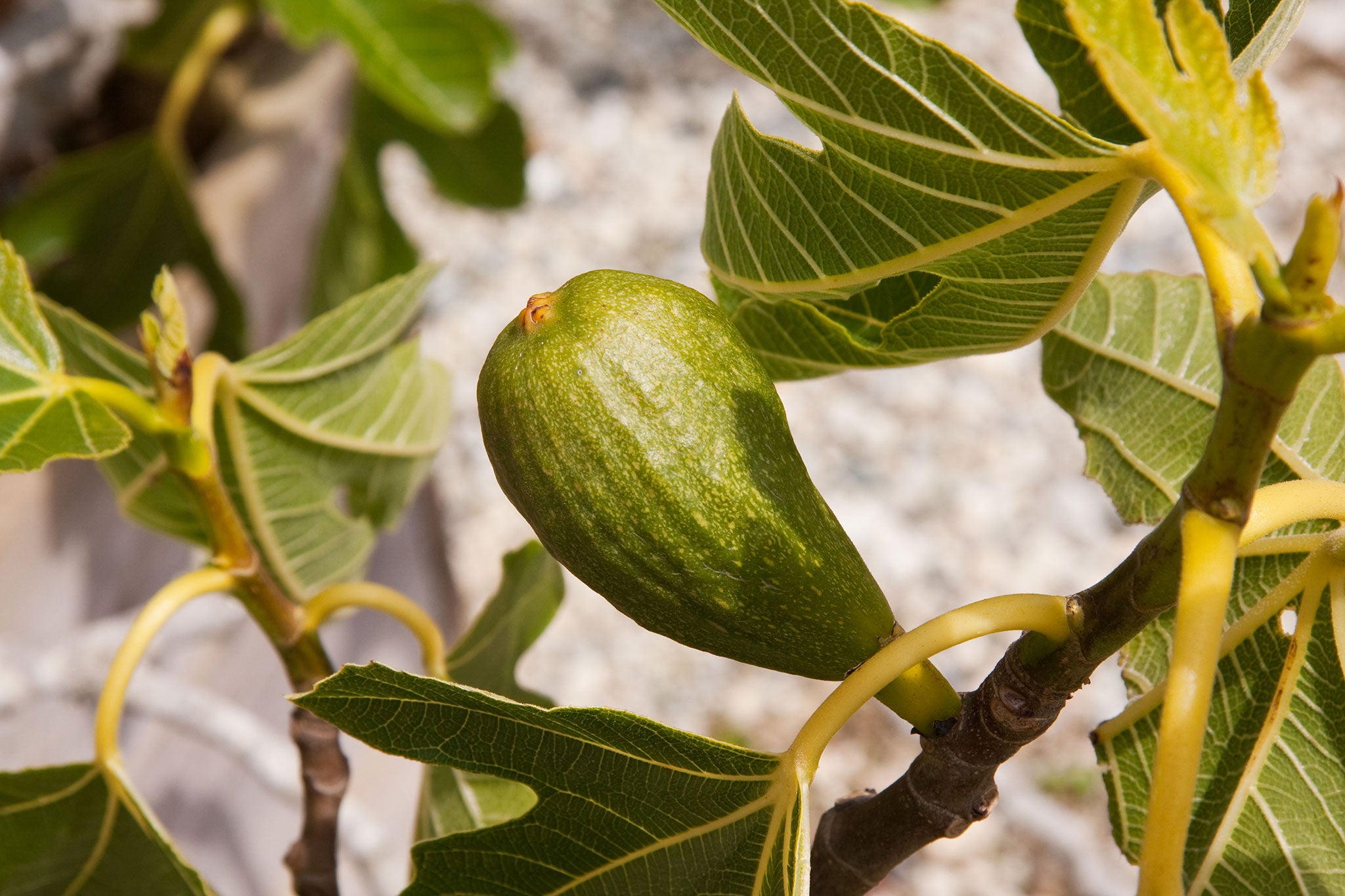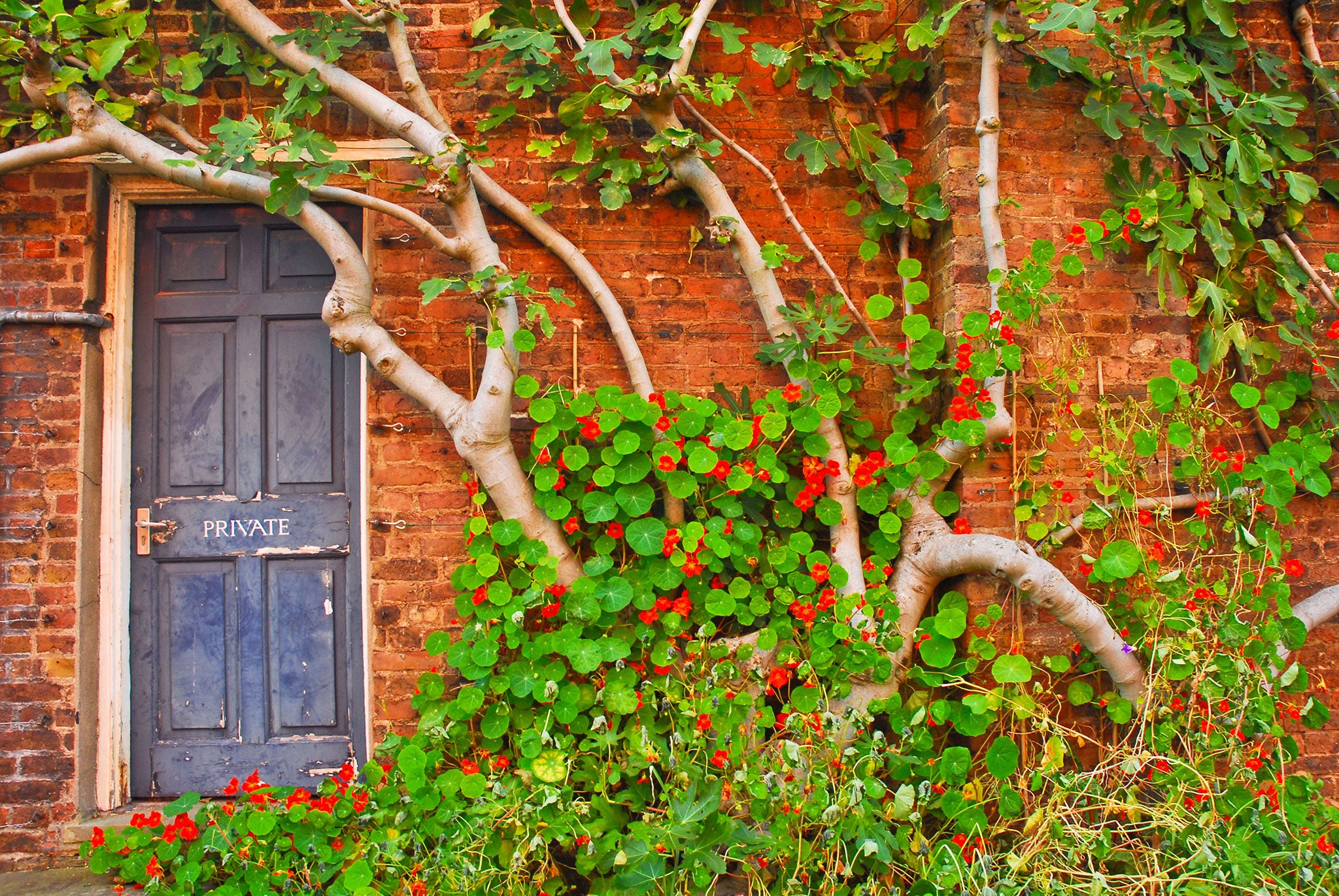Anna Pavord: Fig trees are robust, flexible and, of course, the fruit is delicious

Your support helps us to tell the story
From reproductive rights to climate change to Big Tech, The Independent is on the ground when the story is developing. Whether it's investigating the financials of Elon Musk's pro-Trump PAC or producing our latest documentary, 'The A Word', which shines a light on the American women fighting for reproductive rights, we know how important it is to parse out the facts from the messaging.
At such a critical moment in US history, we need reporters on the ground. Your donation allows us to keep sending journalists to speak to both sides of the story.
The Independent is trusted by Americans across the entire political spectrum. And unlike many other quality news outlets, we choose not to lock Americans out of our reporting and analysis with paywalls. We believe quality journalism should be available to everyone, paid for by those who can afford it.
Your support makes all the difference.Figs are great survivors, hanging on in old gardens long after the lawns and walls on which they were displayed have disappeared. There was one in our old place, where, after 18 months of hacking, we discovered we had a walled garden. It took about 15 years to get that plot back into full production, and the fig was one of the first things we tackled, once we had cleared a way through to it. The stone wall against which it must once have been trained was still standing (south-facing), but the tree had long since broken its moorings and arched out over about 20 feet of ground, its huge leathery leaves unmistakeable among the brambles and seedling sycamores.
Figs are generous creatures and if you lop off one of their big branches, they will, with no hard feelings, send out a load of new shoots from the base of the tree. This is what happened with ours. Each year, we took out one enormous trunk, right at the bottom, and trained in the new growth as it arrived. The branches are unusually pliable and lend themselves well to training. A fan is the usual form and you can fit in as many struts as you have room for.
It's best to do this kind of work before the tree leafs up, so you can see more easily where the cuts need to be made and where the new growths can be tied in. Late March is a good time. If the fig produces an excessive amount of growth from the base, you can cut it out during summer. In our present garden, we have a fig on the west-facing wall of a terrace. There's a bench there too, which the fig tries to take over, so summer snipping is a necessity.
I meant, with this present fig, to turn it into a leafy little house, like something we saw on Sark ages ago. With the west-facing terrace in front, it would have given us a cosy place for supper outside. I thought it all through: two posts at the corners of the terrace, with a strut across the front and others reaching back to the wall. Roof timbers running from the fig wall at the back of the terrace to the strut at the front. Some parallel wires stretched at right angles over the roof timbers, to give plenty of places to tie in new leafy cover. And the sides? Open I thought, to prevent it seeming too claustrophobic a space. And to allow us the view sideways over the valley, with the rooks hurtling about the sky, showing off to each other.
It never happened. Other projects were more urgent – the water supply, for a start – and then we made the terrace itself bigger. But I'm glad to have the fig, even if blackbirds always get the fruit before we do. It's an architectural plant, and a good host for clematis to scramble through. Ours puts up with the close company of two roses and two clematis, all inherited with the fig itself.
Figs need protection from cold winds and are unlikely to succeed in the open in very cold areas. They can be grown very successfully in cool greenhouses, but they take up a lot of room. Although it loses its leaves in winter, a fig tree, starkly stripped, still contributes to the garden scene. It has good bones and gives an air of distinction to a garden, for it is a fruit with an ancient history.
We think of them as Mediterranean fruits, but their true home is further east where, before it was domesticated, the fig grew along the banks of the Jordan. It spreads prolifically along rivers. There > are superb self-sown specimens sprouting out of the Chelsea Embankment.
It's said that the first fig tree that anyone had seen in England grew at Lambeth Palace, where in 1525, it had been introduced by a Cardinal Pole who'd spent much of his life in Italy. Writing more than 300 years later, John Claudius Loudon said it was still there, a variety known by then as 'White Marseilles'. You can still get it, along with more than 80 other kinds of fig. There is a whole fig world beyond the two kinds most usually recommended: 'Brown Turkey' the hardiest type, producing chocolate-coloured fruit with deep red flesh, and 'Brunswick' which bears large fruit with red flesh and yellow-green skin.

Where space is limited, a fig can be grown in a large pot to stand in a sheltered corner. Use a loam compost rather than a multi-purpose one, to give as much weight as possible to the container and help prevent the whole assembly toppling over in a gale. Figs, which are inclined to make too much leafy growth in our damp climate (I'm talking about the south of the country, not the north), fruit more freely if the roots are restricted. If you are planting in the open ground, dig a hole about 1m (3ft) deep and wide and line it with brick or concrete slabs. Plant the fig inside this box, mixing plenty of bonemeal with the earth that you replace.
By nature, they are forgiving trees, as you might guess from the fact that they grow so successfully trained on the façade of the National Gallery in London's Trafalgar Square, where until the reconfiguration of the square, they were drenched by the fumes of a thousand buses. There, they were planted for their architectural foliage.
If you want them to fruit, they must have sun and shelter, which may mean a south-facing wall or a cool greenhouse. Mulch your tree thickly in late spring with well-rotted manure. Water container-grown trees in dry weather while the fruits are swelling, but do not over-water while they are ripening or they may split.
Figs are usually ready to pick by late summer or early autumn, but the yield will depend on the previous winter's weather and the age of the tree. Wait until the fruit droops on its stem, with the skin just beginning to split and a drop of nectar hanging from the eye. By the end of the season, you may find immature figs already forming on the branches. If you can reach them easily, it's worth picking off the biggest fruits, leaving the nut-sized ones to provide the following year's harvest. On a sizeable tree this isn't feasible.
A tough winter can kill much of the top growth of a fig, even one that is growing against a favoured wall. Wait to see if any of the frosted shoots spring into new growth. If they don't, cut them out. Trees will usually sprout again from the base, though pot-grown specimens will be at greater risk than trees growing in the ground. Figs are remarkably pest-free, but sometimes a grey mould attacks the young shoots of a fig, causing them to die back. You can see the brownish grey pustules on the dead wood, but if you cut it out, the tree will recover rapidly.
The biggest selection of fig trees is offered by Reads Nursery in Suffolk (readsnursery.co.uk, 01986 895555) and Cross Common Nursery in Cornwall (crosscommonnursery.co.uk, 01326 290722)
Join our commenting forum
Join thought-provoking conversations, follow other Independent readers and see their replies
Comments